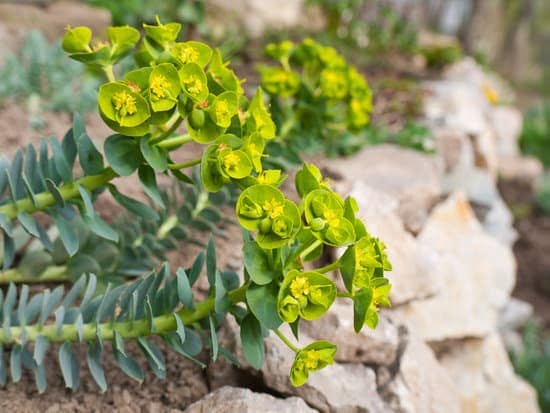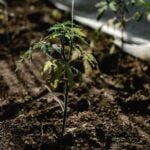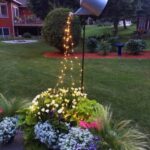Having a well-designed vegetable garden layout is crucial for maximizing productivity, efficiency, and enjoyment in your gardening endeavor. Whether you are a seasoned gardener or just starting out, the design of your garden can greatly impact the success of your harvests and overall experience. By carefully planning and organizing your vegetable garden layout, you can optimize space, improve accessibility, enhance pest control, and promote healthy plant growth.
The first step in creating a well-designed vegetable garden is understanding your garden space. Assessing factors such as size, soil quality, and sunlight availability will help determine what vegetables will thrive in your specific environment. Additionally, proper planning for crop rotation can maximize soil health and prevent disease outbreaks by strategically alternating plant families each growing season.
Efficient pathways are another essential aspect of a well-designed vegetable garden layout. Designing pathways that provide optimal access to all areas of your garden while minimizing soil compaction is key. This not only makes maintenance tasks easier but also ensures that plants have plenty of room to grow without being trampled or damaged during routine care.
Companion planting is a popular technique in vegetable gardening that involves strategically pairing certain plants together to benefit one another. By planting compatible species side by side, you can naturally control pests, improve nutrient uptake, and enhance overall plant growth. Additionally, incorporating vertical gardening methods allows you to effectively utilize available wall space and supports to increase yield without sacrificing precious ground area.
Understanding Your Garden Space
Understanding the space you have available for your vegetable garden is an essential step in designing your garden layout. By assessing the size of your garden, evaluating soil quality, and considering sunlight exposure, you can create a thriving and productive vegetable garden.
Evaluating Garden Size
Before starting your vegetable garden, it is important to assess the size of your available space. Consider the dimensions and shape of your garden area. This will help determine how many beds or containers you can fit and dictate the layout of your garden. Additionally, take into account any specific constraints or obstacles such as trees, structures, or uneven terrain that may affect the design and placement of your plants.
Assessing Soil Quality
The quality of your soil plays a crucial role in the success of your vegetable garden. Test the pH level and nutrient content of your soil to ensure it is suitable for growing vegetables. Conducting a soil test can provide valuable information about any necessary amendments or improvements needed to optimize plant growth. Consider factors like drainage, compaction, and organic matter content in order to tailor soil preparation techniques accordingly.
Considering Sunlight Exposure
Sunlight is another critical factor to consider when assessing your garden space. Most vegetables require at least 6 hours of direct sunlight per day for optimal growth and productivity. Observe how the sun moves across your garden throughout the day to identify areas with full sun, partial shade, or deep shade.
This will help you determine where to place sun-loving crops versus those that tolerate or even prefer shade. Take note of any existing structures or trees that may cast shadows on certain portions of your garden as well.
By understanding these key aspects of your garden space – its size, soil quality, and sunlight exposure – you can make informed decisions when designing your vegetable garden layout. Taking these factors into consideration will enable you to create an environment that meets the specific needs of your plants, leading to a more successful and rewarding gardening experience.
Choosing the Right Vegetable Varieties
When it comes to designing your vegetable garden layout, one crucial factor to consider is the selection of the right vegetable varieties. Choosing the right vegetables for your garden not only ensures a successful harvest but also plays a significant role in maximizing space and resources. Here are some key factors to consider when selecting which vegetables to grow:
1. Climate and Local Conditions: Different vegetables thrive in different climates and growing conditions. It is essential to consider the climate of your region and choose vegetables that are well-suited for it. Some crops prefer cooler temperatures, while others require warmer weather. Additionally, consider factors like frost dates, rainfall patterns, and wind exposure as these can greatly impact the success of your vegetable garden.
2. Space Available: The amount of space you have available in your garden will dictate what types of vegetables you can grow. Some plants take up more space than others, so it’s important to choose compact or bushy varieties if you have limited space. On the other hand, if you have ample space, you can opt for vining or sprawling types that will spread out and take advantage of the room.
3. Time and Effort Required: Each vegetable has different needs when it comes to watering, fertilizing, pruning, and harvesting. Consider how much time and effort you are willing to dedicate to your garden and choose vegetables accordingly. Some crops may require daily maintenance or frequent attention, while others are more low-maintenance.
In addition to these factors, other considerations include taste preferences, nutritional value, disease resistance, and yield potential. By carefully selecting vegetable varieties that align with these factors, you can ensure a bountiful harvest that meets your specific needs and circumstances.
To help you make informed decisions about specific vegetable varieties suitable for your region or microclimate zone, consult reputable gardening resources or seek advice from local gardening experts. They can provide valuable insights and recommendations that will help you choose the right vegetable varieties for your garden layout.
Planning for Crop Rotation
Crop rotation is an essential aspect of designing your vegetable garden layout as it plays a crucial role in maximizing soil health and preventing disease. By effectively rotating crops, you can reduce the risk of nutrient depletion and pest build-up, while also promoting a balanced ecosystem within your garden.
One of the first steps in planning for crop rotation is understanding the different plant families and their specific needs. Grouping vegetables into families helps to identify which crops are susceptible to similar pests and diseases, making it easier to plan rotations that minimize these risks. Some common vegetable families include nightshades (tomatoes, peppers, eggplants), brassicas (cabbage, broccoli, kale), and legumes (peas, beans).
Once you have identified the different plant families in your garden, you can create a crop rotation schedule. The goal is to avoid planting the same family or related crops in the same area for consecutive years. This practice reduces the likelihood of pests and diseases building up in the soil over time. Instead, consider rotating crops with plants from different families each year to disrupt pest cycles and maintain healthy soil.
To make implementing crop rotation easier in your vegetable garden layout, consider using a visual aid such as a chart or map that shows which areas of your garden were previously planted with certain crops. This will help you keep track of what was grown where and ensure that you rotate properly each season.
Designing Efficient Pathways
When it comes to designing a vegetable garden layout, one important aspect to consider is the design of pathways. Efficient pathways can optimize access to your plants and minimize soil compaction, ultimately improving the overall health and productivity of your garden.
One way to achieve efficient pathways is by incorporating a well-thought-out design that takes into account the layout of your garden space. Start by assessing the size and shape of your garden area, as this will determine the placement and direction of your pathways.
Consider how you will navigate through the garden and plan for easy access to all areas. Creating curved or winding paths can not only add visual interest but also allow for better flow between different sections of your garden.
In addition to considering the layout, it’s also important to choose appropriate materials for your pathways. Depending on personal preference and budget, there are various options available such as gravel, mulch, stepping stones, or even grass. Each material has its advantages and disadvantages in terms of aesthetics, maintenance, and functionality.
For example, gravel provides good drainage but may require occasional upkeep, while stepping stones can add a rustic feel but may be more expensive initially. Ultimately, select a material that suits your needs and complements the overall look of your vegetable garden.
To further optimize access in your vegetable garden layout, consider incorporating wider pathways where necessary. This can accommodate wheelbarrows or other gardening equipment that may be required for tasks like moving compost or transporting harvested produce. Narrower paths can still be functional for regular foot traffic but widening certain areas can make certain tasks much easier in the long run.
Efficient pathways not only provide ease of movement in your vegetable garden but also play an essential role in reducing soil compaction. When walking on soil that’s too compacted from heavy foot traffic or gardening equipment, it can hinder root growth and affect nutrient uptake by plants.
To mitigate this issue, consider adding stepping stones or other materials that create a firm surface for walking without compacting the soil beneath. Additionally, incorporating raised beds or planting in mounded rows can help minimize foot traffic on the actual growing areas and focus it primarily on the pathways.
By designing efficient pathways in your vegetable garden layout, you can optimize access to your plants while minimizing soil compaction. This will not only make gardening tasks more convenient but also improve overall plant health and productivity. Choose a design that suits your needs and materials that work well with your garden space, ensuring a successful and enjoyable gardening experience.
Companion Planting
One of the main benefits of companion planting is pest control. Certain plants have natural repellent properties that can deter pests from attacking neighboring vegetables. For example, planting marigolds alongside tomatoes can help repel nematodes, while interplanting basil around beans can discourage aphids. Additionally, some plants attract beneficial insects like ladybugs and lacewings that feed on pests, providing natural pest control without the need for chemical pesticides.
In addition to pest control, companion planting also helps enhance plant growth. Some plant combinations have mutually beneficial effects on soil fertility and nutrient availability. For instance, planting nitrogen-fixing legumes like peas or beans alongside nitrogen-demanding vegetables such as corn or cabbage can provide a natural source of nitrogen to the soil. Similarly, tall plants like corn or sunflowers can provide shade for heat-sensitive crops when planted together.
Overall, incorporating companion planting techniques in your vegetable garden layout can lead to healthier plants and higher yields. Understanding which plants complement each other in terms of pest control and growth enhancement is key to success. By carefully planning your plant combinations and taking advantage of the natural interactions between species, you can create a thriving ecosystem in your garden while reducing the need for synthetic inputs.
| Benefit | Example |
|---|---|
| Pest Control | Marigolds repel nematodes when planted with tomatoes |
| Enhanced Growth | Nitrogen-fixing legumes like peas provide nitrogen for corn or cabbage |
| Natural Ecosystem | Beneficial insects attracted to companion plants help control pests |
Vertical Gardening
One of the main advantages of vertical gardening is its ability to provide more growing area in smaller spaces. By using walls, fences, or specially designed structures like trellises or pergolas, gardeners can create additional planting surfaces without taking up valuable ground space. This is particularly beneficial for urban gardeners or those with limited yard space.
In addition to maximizing space utilization, vertical gardening can also enhance crop yield. By training plants to grow vertically and providing them with proper support, gardeners can promote better air circulation and sunlight exposure. These favorable conditions can result in stronger and healthier plants that produce higher yields. Furthermore, vertical gardening can help minimize diseases associated with soil-borne pathogens as well as reduce the risk of pest infestations by reducing contact with the ground.
Overall, vertical gardening offers an efficient and effective way to maximize yield in small spaces. Whether you have a small backyard or a balcony garden, consider incorporating this technique into your vegetable garden layout for increased productivity and healthier plants.
| Advantages | Benefits |
|---|---|
| Maximizes space utilization | More planting area in small spaces |
| Increases crop yield | Better air circulation and sunlight exposure |
| Reduces disease risk | Minimizes contact with soil-borne pathogens |
| Prevents pest infestations | Less contact with the ground |
Sowing Seeds or Transplants
Direct Seeding Seeds
One of the common methods for planting vegetables is direct seeding, which involves sowing seeds directly into the soil of your vegetable garden. This method has its own set of pros and cons that you should consider when designing your vegetable garden layout.
One advantage of direct seeding is that it allows for a wider variety of vegetable choices. Many vegetables, such as carrots, lettuce, and radishes, are best suited for direct seeding as they do not transplant well. By directly sowing these seeds in your garden, you can ensure maximum growth and yield.
However, direct seeding also has its disadvantages. It can be more time-consuming and labor-intensive compared to using transplants. Sowing seeds requires careful spacing and thinning of seedlings to prevent overcrowding, which can lead to poor growth and disease susceptibility. Additionally, some seeds may have low germination rates or be sensitive to soil conditions, making direct seeding less reliable than using transplants.
Transplanting Seedlings
Another option for planting vegetables is using transplants or seedlings grown indoors or purchased from nurseries. Transplanting seedlings offers its own set of advantages and disadvantages that should be taken into account when designing your vegetable garden layout.
One benefit of using transplants is that it allows for earlier harvests. Since the seedlings have already started growing indoors before being transplanted outdoors, you can enjoy fruits and vegetables sooner compared to waiting for seeds to germinate and grow. Transplants also tend to have a higher success rate since they are already established plants with developed root systems.
However, there are drawbacks to using transplants as well. They can be more expensive than purchasing seeds since you need to buy individual plants or trays of seedlings. Transplanting also requires careful handling to avoid damaging the delicate roots and stems of the seedlings. There is also a risk that the seedlings may suffer from transplant shock or struggle to adjust to the outdoor conditions, especially if not properly hardened off.
Choosing the Ideal Planting Method
When deciding between direct seeding and using transplants for your vegetable garden layout, it’s important to consider factors such as the specific vegetable varieties you want to grow, the time and resources you have available, and your gardening experience. In some cases, a combination of both methods may be suitable.
For beginners or those with limited space, starting with transplants may be more convenient and provide quicker results. On the other hand, experienced gardeners who enjoy experimenting with a wider range of vegetable options may prefer direct seeding.
Ultimately, the choice between sowing seeds or using transplants will depend on your personal preferences and goals for your vegetable garden. Whichever method you choose, proper planning and consideration should be given to ensure successful plant growth and a bountiful harvest.
Creating Visual Interest
When designing your vegetable garden layout, it’s not just about functionality and productivity, but also about aesthetics. Creating visual interest in your garden can make it a more enjoyable and inviting space. By incorporating color, texture, and edible landscaping elements, you can transform your vegetable garden into a truly beautiful and captivating space.
Color
One way to add visual interest to your vegetable garden is by using plants with different colors. Consider planting vegetables that have vibrant shades like red peppers, purple cauliflower, or rainbow chard. You can also plant flowers among your vegetables to add pops of color. Marigolds, nasturtiums, and zinnias not only provide beautiful blooms but also attract pollinators that can enhance the productivity of your garden.
Texture
Adding plants with different textures can create depth and dimension in your vegetable garden. Mix leafy greens like lettuce and spinach with taller plants like tomatoes or trellised cucumbers. The combination of the smooth leaves of lettuce with the rough stems of tomatoes adds visual interest to the overall design. Incorporating herbs like thyme or rosemary with their fine-textured foliage can also provide contrast against the broader leaves of vegetables.
Edible Landscaping
Edible landscaping is another way to incorporate visual interest into your vegetable garden while maximizing its productivity. Instead of planting vegetables in straight rows or traditional raised beds, try using containers, vertical structures like trellises or arbors for climbing plants such as beans or peas. You can also include ornamental varieties of vegetables that are both visually appealing and tasty, like purple basil or variegated kale.
By incorporating these elements into your vegetable garden layout, you not only create a visually stunning space but also increase biodiversity by attracting beneficial insects and pollinators. Additionally, by making your garden aesthetically pleasing, it can become an enjoyable and relaxing place for you to spend time in. So, have fun experimenting with different colors, textures, and edible landscaping elements to create a vegetable garden that is beautiful and productive.
Maintenance and Seasonal Considerations
Maintaining a well-designed vegetable garden layout goes beyond just planning and planting. It requires regular maintenance and attention to ensure the health and productivity of your crops. In this section, we will explore some important considerations when it comes to watering, weeding, and harvesting in your vegetable garden.
Watering is crucial for the success of your plants, as it provides the necessary hydration they need to thrive. The amount and frequency of watering will depend on various factors such as the type of soil, weather conditions, and the specific needs of each vegetable variety.
Generally, it is best to water deeply rather than frequently, as this encourages deeper root growth and helps plants withstand dry periods. It is important to monitor the moisture level of the soil regularly and adjust your watering schedule accordingly.
Weeding is another essential task in maintaining a healthy vegetable garden. Weeds compete with your plants for nutrients, water, and sunlight, so it is important to keep them under control. Regularly inspect your garden for any weeds that have emerged and remove them promptly before they have a chance to establish themselves.
There are various methods for weed control including hand-pulling, hoeing, mulching or using organic herbicides. Choose a method that suits you best based on your gardening preferences and the size of your garden.
Harvesting at the right time ensures that you enjoy vegetables at their peak flavor and quality. Different vegetables have different indicators of readiness for harvest such as size, color or texture. It is important to familiarize yourself with these indicators for each vegetable variety in order to avoid picking them too early or too late. Additionally, be mindful not to damage or bruise the vegetables during harvest as this can affect their taste and shelf life.
In summary, proper maintenance of your vegetable garden includes regular watering based on plant needs, diligent weeding to minimize competition between weeds and your crops, and careful harvesting to enjoy the best flavor and quality of your vegetables. By paying attention to these seasonal considerations, you will be able to maximize the productivity and enjoyment of your well-designed vegetable garden layout.
| Watering | Weeding | Harvesting |
|---|---|---|
| Monitor soil moisture regularly and adjust watering schedule accordingly. | Regularly inspect the garden for emerging weeds and remove them promptly. | Familiarize yourself with indicators of readiness for harvest for each vegetable variety. |
| Water deeply rather than frequently to encourage deeper root growth. | Choose a weed control method that suits your gardening preferences and garden size. | Avoid damaging or bruising vegetables during harvest to maintain their flavor and shelf life. |
Conclusion
In conclusion, designing and maintaining a well-designed vegetable garden layout is crucial for the success of your garden. It not only enhances the visual appeal of your space but also maximizes productivity and minimizes potential problems. By regularly evaluating and adjusting your vegetable garden layout, you can ensure that it continues to meet your needs and goals.
Regular evaluation of your vegetable garden layout allows you to assess its effectiveness and identify any areas that may need improvement. This includes considering factors such as the size of your garden space, soil quality, sunlight exposure, and crop rotation. By understanding these aspects, you can make informed decisions about what vegetables to plant, where to plant them, and how to maximize their growth potential.
Adjustments to your vegetable garden layout might involve redesigning pathways for better access or incorporating vertical gardening techniques to make efficient use of wall space. Companion planting strategies can also be implemented or adjusted over time for improved pest control and growth enhancement. Additionally, you may want to consider adding visual interest through the use of color, texture, and edible landscaping.
Maintenance is another important aspect that should be evaluated regularly. This includes proper watering techniques, weed management practices, and timely harvesting. By staying on top of these tasks, you can prevent problems before they arise and ensure a healthy and bountiful harvest.
Frequently Asked Questions
What Vegetables Should Not Be Planted Next to Each Other?
Some vegetables should not be planted next to each other in order to prevent pest infestations and diseases. For instance, it is advisable to avoid planting tomatoes next to potatoes, as they are both susceptible to similar pests such as aphids and tomato hornworms. Additionally, beans and onions should not be planted together since beans can inhibit the growth of onions and adversely affect their flavor.
Carrots and dill should also be kept apart because dill attracts beneficial insects that may prey on carrot pests. By researching companion planting guidelines or consulting gardening resources, you can determine which combinations of vegetables are best avoided in order to promote healthy growth.
What Order Should I Plant My Vegetable Garden?
When determining the order to plant your vegetable garden, it’s essential to consider factors such as the plants’ specific requirements, the size of each plant at maturity, sunlight needs, and harvesting timelines. Start by placing taller vegetables such as corn or pole beans at the north end of your garden bed so that they don’t shade out shorter plants.
Next, consider the amount of sunlight required by various crops and position them accordingly from east to west within your garden layout. Also, think about harvest times – plant faster-growing crops like lettuce or radishes alongside slower-growing ones like tomatoes or peppers so you can maximize space utilization while waiting for the latter vegetables to mature.
What Is the Best Layout for a Raised Bed Vegetable Garden?
The best layout for a raised bed vegetable garden depends on various factors such as available space, water drainage patterns, and individual preferences. However, there are some general principles that can guide you in designing an effective raised bed layout. First, ensure that your beds are narrow enough (around four feet wide) for easy access from both sides without having to step on the growing soil. This prevents compaction and reduces unnecessary damage to delicate roots below the surface.
Additionally, incorporate pathways between your beds for convenient navigation while harvesting or tending to plants. In terms of bed orientation, aligning them north-south allows for optimal sunlight exposure while minimizing shading from taller plants. Lastly, consider grouping plants with similar water requirements together to ease irrigation efforts and prevent over or under watering certain crops.

Welcome to my gardening blog! I am passionate about plants and enjoy sharing my knowledge and experiences with others. In this blog, I will write about everything related to gardening, from tips on how to get started to updates on my own garden projects.





